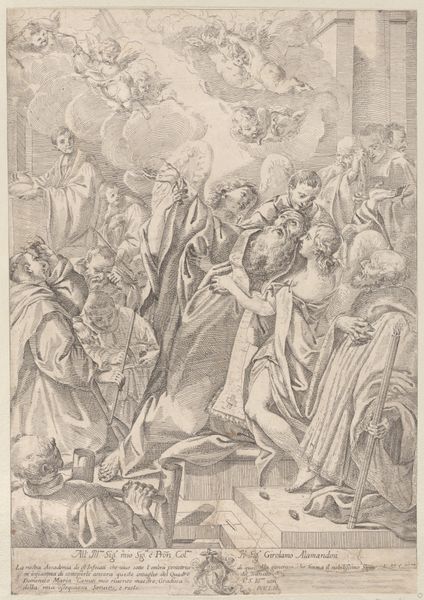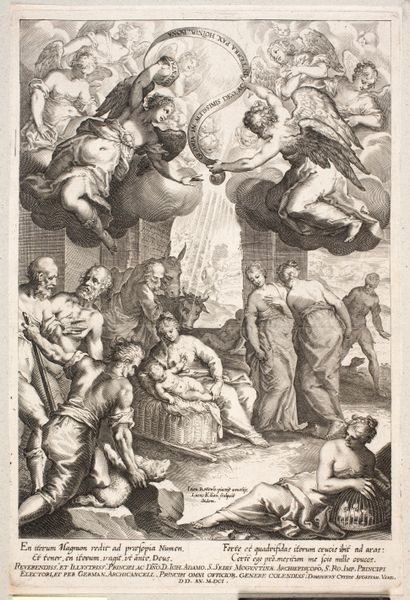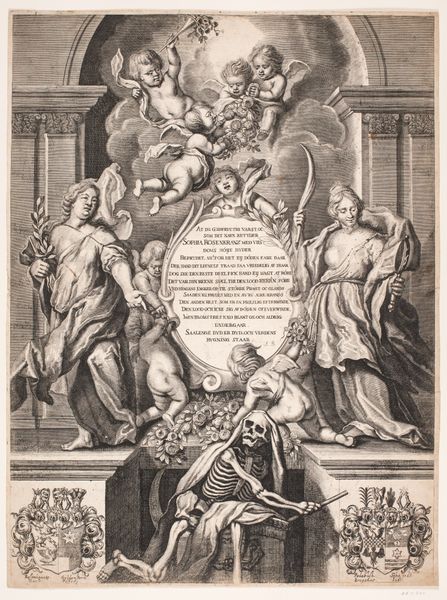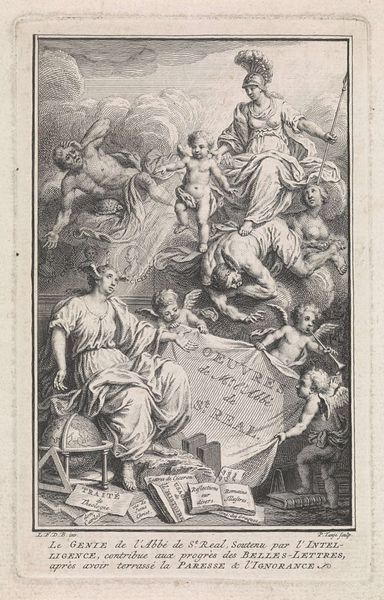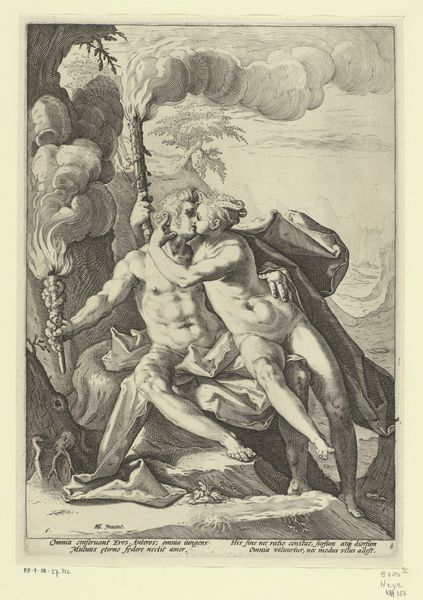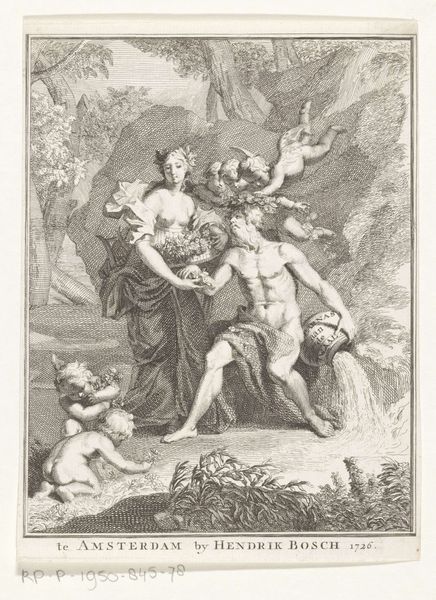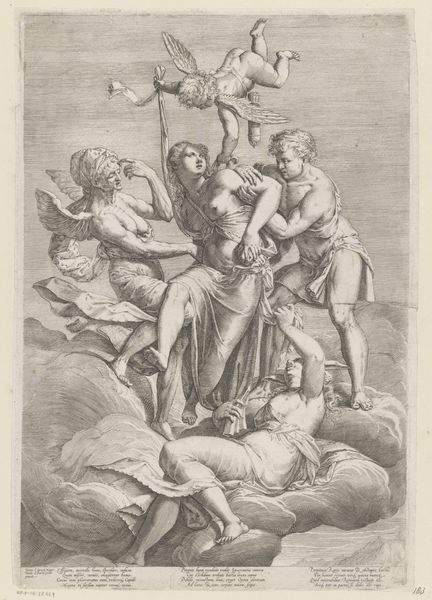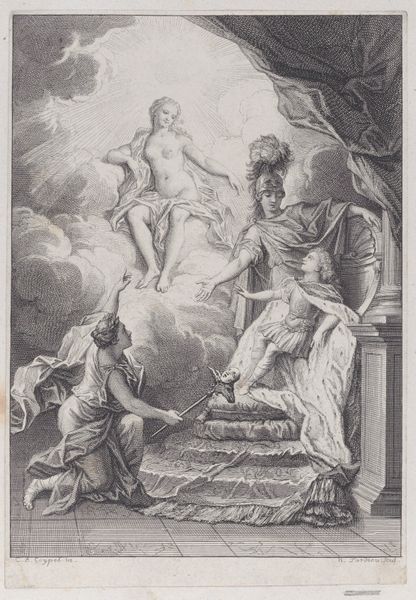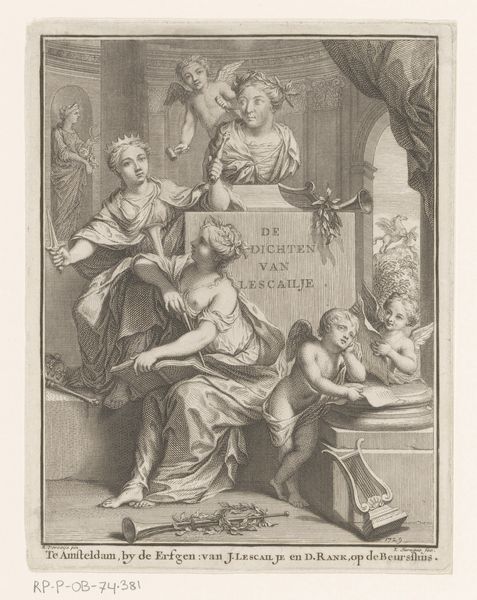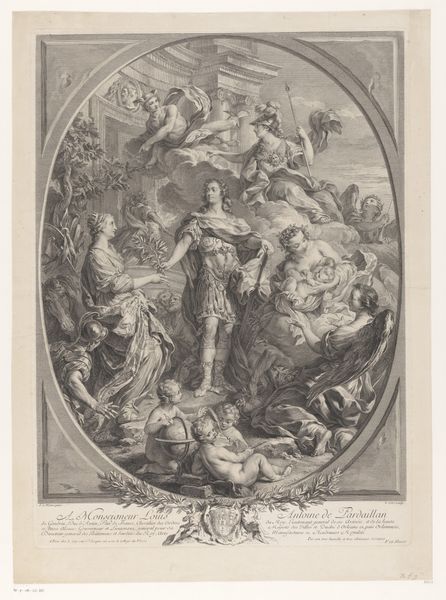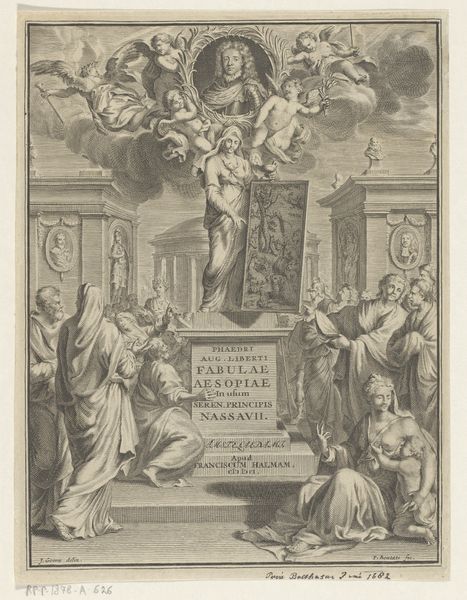
drawing, print, engraving
#
drawing
#
allegory
#
baroque
# print
#
caricature
#
figuration
#
academic-art
#
engraving
Dimensions: Sheet (trimmed): 10 7/8 × 8 5/16 in. (27.6 × 21.1 cm)
Copyright: Public Domain
Curator: Look at the composition here—a wonderful etching entitled "Frontispiece," dating from the mid-18th century and attributed to Pierre Alexandre Aveline. The baroque exuberance practically leaps off the page, doesn't it? Editor: It does, though my immediate reaction is its charm; an allegorical representation, certainly, but also, playful. The cherubic figures holding what seems to be a banner, are they not? There’s a sweetness, almost cloying, in their plumpness. Curator: Precisely! These are indeed cherubs, and the 'banner' they support carries the title "Premier Livre de Groupes d'Enfans Par F. Boucher," advertising a book of children's figure studies by the prominent Rococo painter Francois Boucher. The line work has a graphic quality, and note how the artist's own name, Aveline, appears below—designating that he "Grave par", or engraved, after Boucher's paintings. This underscores the collaborative aspect of printmaking at the time. Editor: Ah, so it's essentially a visual advertisement. Thinking about audience and distribution, would this have been for artists and artisans? What role might this sort of imagery play within print culture, within social perceptions of learning and refinement? Curator: Indeed. Its presence suggests a broader interest in visual culture, appealing directly to those aspiring to learn drawing techniques of the time, to improve upon representation. Notice how the engraving mimics the texture and tones of drawings that engravers often reproduce. The image also contains much Baroque symbolism that conveys meanings which are open to decoding: what about the open sky around the banner? Why those babies with wings instead of men, women, or even regular babies? Editor: Considering this from a contemporary vantage point, that the cherubs present not only the work of another, but in such a flattering manner, one wonders about their public role during the height of academic art—did the caricature become the calling card? Did it offer more levity and humor for a wide swathe of audiences and buyers? Curator: That’s an insightful question; it really gets to the heart of how art functions in public life and commerce, doesn't it? Editor: This examination certainly offered new perspectives, going beyond pure aesthetic judgment. Curator: Agreed. It’s important to move beyond composition, lines and shading, and engage critically with the broader narratives around artistic production.
Comments
No comments
Be the first to comment and join the conversation on the ultimate creative platform.
